Table of Contents
Rocket (Eruca sativa), also called roquette, arugula, or salad rocket, is a herb that belongs to the Brassicaceae family (mustard), and it produces edible, peppery, and spicy leaves. The plant’s native is Mediterranean, a common salad vegetable used widely in Europe.
The young leaves are full of nutrition and rich in calcium, iron, amino acids, and vitamins A, C, B, and K. It also contains beta carotenes which improve eye health, and most importantly, it provides glucosinolates which serve as a protective factor against different types of cancer.
According to the BBC, it is one of the most budget-friendly superfoods. Such a nutritious plant is easy to grow in your garden as well. So why not try to grow these plants (with such an interesting name) in your garden? Read on to learn how to grow rocket plants in 4 easy steps!
Points to Consider Before Potting Rockets
1. Hardiness
Hardiness refers to how easily the plant can grow in different weather conditions. Rocket plants have a hardiness rating of H4 and can grow in average winter temperatures in the UK, and might not fare well in harsh winters. It can also grow comfortably in most of the regions in the UK. These ratings are given by the Royal Horticultural Society UK.
2. Garden vs. Wild Rocket
There are 2 different types of rocket plants, namely wild rocket and salad rocket which are different in appearance and usage. While salad rocket is a beloved addition to British salads and pizza toppings, the wild rocket is not so widely used. It can be recognised by its distinctly smaller leaves.
3. Taste
They both differ in taste also, and the salad rocket has a nuttier taste in comparison. However, the wild rocket has a strong peppery flavour in comparison to the milder flavour of the salad rocket.
4. Annual vs. Perennial
Both can be grown in containers indoors or in garden beds outdoors. Garden rocket is annual, meaning it will complete one growing season (about a year) and then will die off. Whereas wild rocket is a perennial plant that can regrow every growing season. But the growth of wild rocket plants is slower than garden rocket ones.
5. Growing Conditions
Both varieties need shade, especially in summer, as they will bolt (premature flowering of the plant, after which not many leaves will be produced). They don’t prefer hot or dry weather. Garden rocket has to be grown in small batches, whereas wild rocket can produce harvests for a longer time. In general, wild rocket is easier to grow in any type of soil, even less fertile soil. Depending on the need, you can choose the best one that fits you!
After you have chosen the type, you need to choose the variety of rocket plants. You can either choose the plain wild or garden rocket types, or you can choose some of the other varieties like the following:
Easy Steps to Grow Rocket in Your Garden Today!
Step 1: Choosing a Variety of Rockets to Grow
Rocket plants grow from seeds and can be harvested in a few weeks. The younger leaves are more flavoured and nutritious, so the plant’s leaves should be regularly picked so that they can grow better. The flowers of the plant are also edible, and they have a peppery taste too.
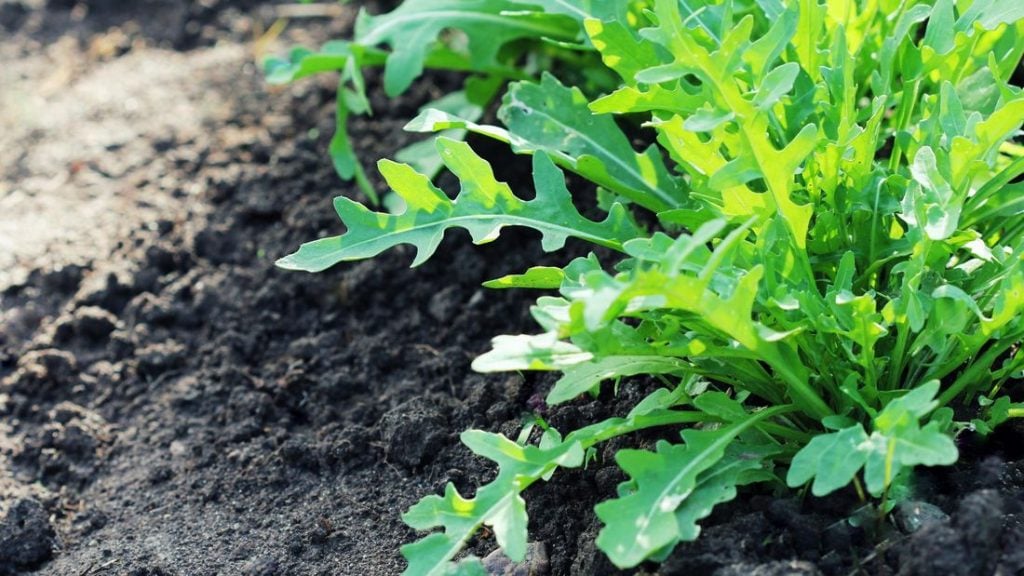
Step 2: Sowing Rocket
Rowing Rocket Indoors
These plants can easily be grown from seeds in a compact small space or a container. Remove the large stones and level the surface of the soil in the pot. You must plant seeds in the pot or container pot or container just below the rim. It needs to be filled with compost, and the soil needs to be moist. Ideally, plant the seeds at a 3 cm distance from each other. Cover with a layer of compost. Gently water it such that the seeds aren’t disturbed.
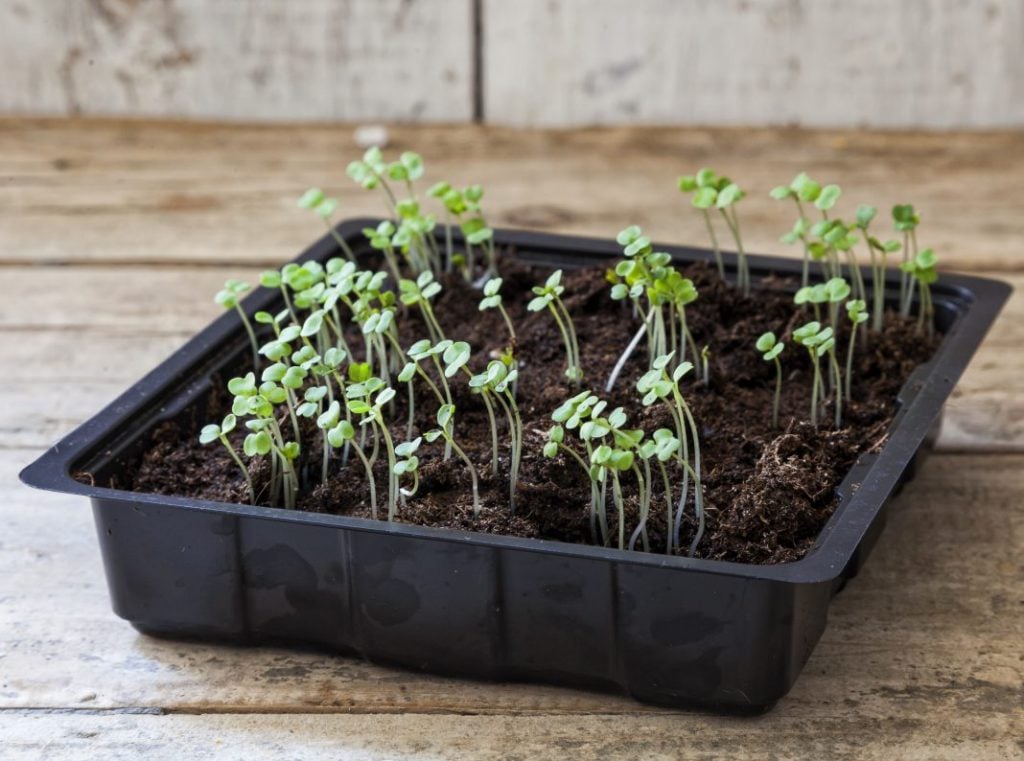
Growing Rocket Outdoors
Make a shallow drill (space to sow the seeds) in the soil that is up to 1 cm deep. Water it so that it becomes moist. Plant the seeds in rows of up to 1 to 2 meters but not longer than that, as it might not look great and will be difficult for you to maintain as well. You can use a small amount of seeds and store the remaining for sowing at a later point. After this, cover them up with a thin layer of compost and water the row/s.
The seedlings will appear in a few days. Once they are grown, if you allow some plants to flower, you won’t need to plant again! You need to protect the plants from slugs and snails as they love to feed on the plant’s young leaves.
Note: Ensure that the seeds are not crowded, and maybe sow them at a 3cm gap. This is because overcrowded plants will bolt early.
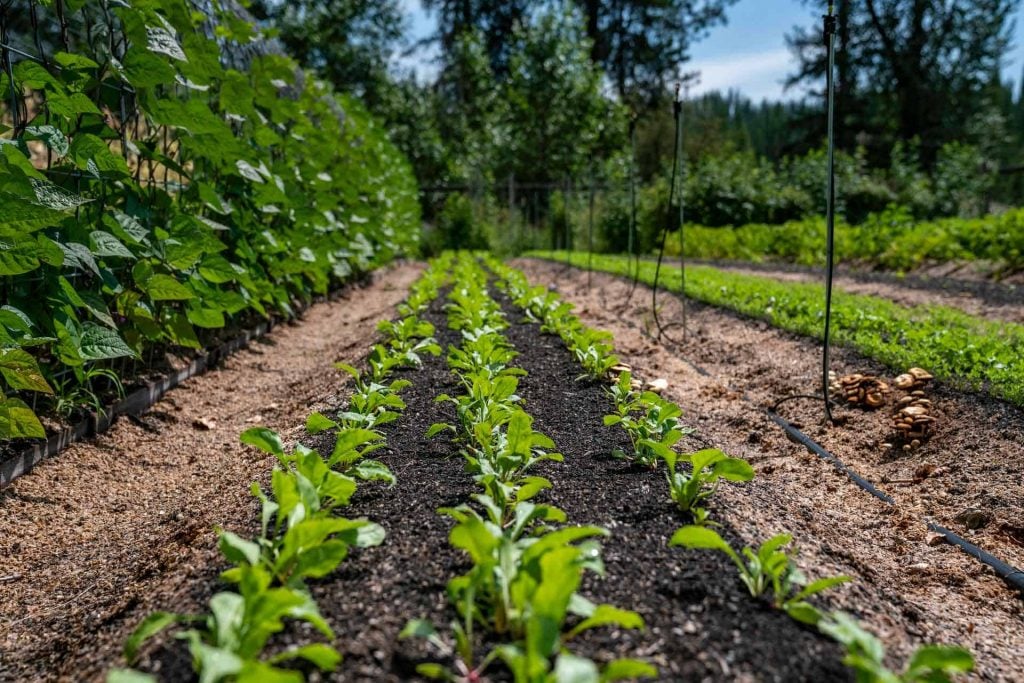
Companion Plants
Rocket plants can be grown along with others, such as basil, onions, tomatoes and celery, as these plants are great companion plants! Since it is a relatively small plant, it doesn’t need a lot of nutrition, either.
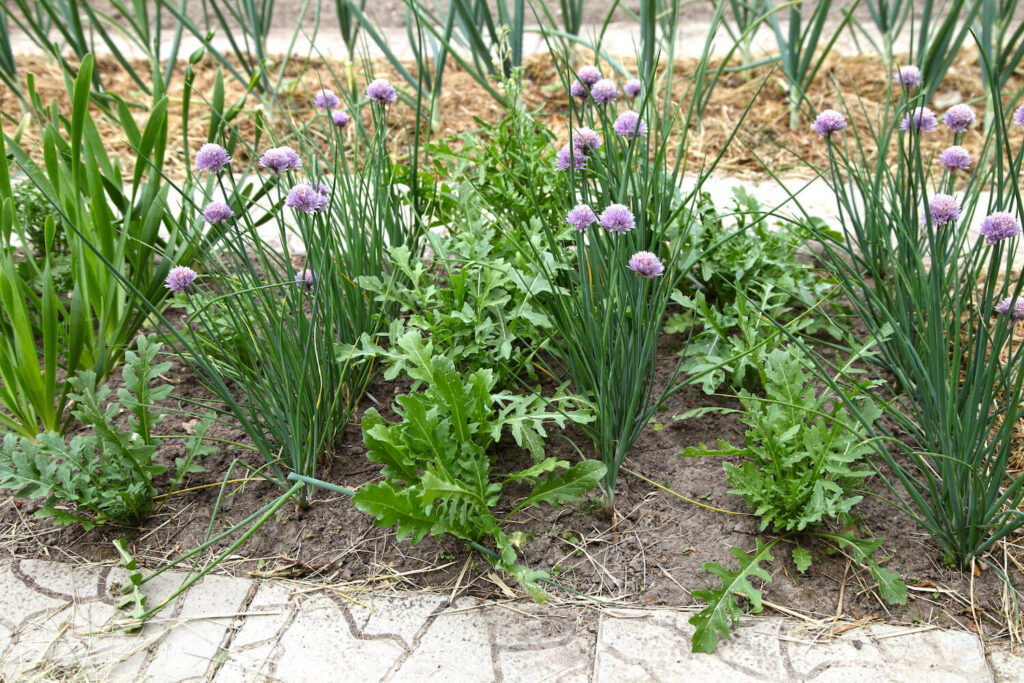
However, it cannot be planted with spinach, peas, coriander, mustard and cruciferous vegetables like cabbage. The nutritional requirements may be similar for these plants and rocket varieties, and therefore, these might not be ideal to grow together.
Check out the ideal time for sowing and harvesting below:
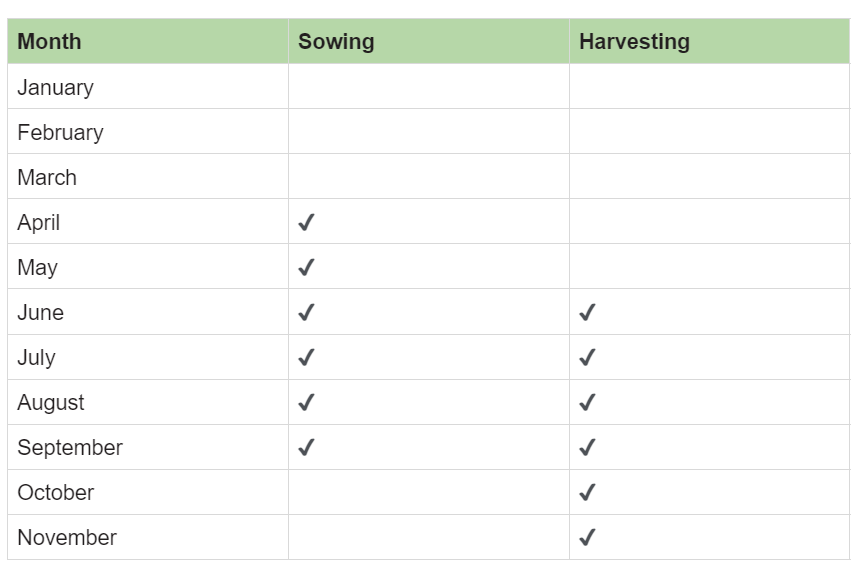
Step 3: Continued Care
Sowing alone is not enough. You need to know how to grow a rocket and care for it, also. Let us learn the best practices for it now!
Watering
Since the plants might bolt if, in dry conditions, it is best to water regularly, especially in summer, it would be best to cover the plants with fleece in the peak of summer to avoid bolting. You can feed it with liquid fertilizer weekly once so that it receives all the nutrients it requires more easily.
Sunlight
Keep them in light shade during summer, but they need some sun to grow efficiently. Even if you cover them with fleece, make sure that you place them in a region where they can get some sun as well.
Ideal Temperature
The ideal temperature for these plants is around 15 to 20 degree Celsius so that they can germinate. However, they can grow even if the temperature is around 5 degree Celsius as well.
Weeding
This is the process of removing unwanted plant growth as it will compete for nutrients with the plants we are growing. Similarly, for rocket plants also, we need to do weeding regularly. One way to identify which rows are your rocket seedlings and which are weeds is to mark the rows when you are planting with a string so that you can easily do the weeding.
Flowering
You need to pinch/cut the stems after they appear because leaving them on the plant increases the chances of it flowering and producing seeds. If you stay in regions where it is hot and dry, you need to take extra precautions to prevent early flowering.
For salad rockets, once they flower and produce seeds, they will eventually die off, and the remainder of the plants should be removed from the soil.
For the wild rocket, it will produce leaves even after it flowers, so you can just trim the plants so that they don’t become too large. This way, you can also make sure that they produce new leaves constantly.
Step 4: Harvest and Enjoy!
The young leaves can be picked from early summer to autumn, depending on when you plant them. In fact, you can start harvesting them as early as a month after you sowed them! If you do this regularly, there are high chances of new and young leaves being produced. You can remove the mature outer leaves first so that you allow younger leaves to grow.
Note: Do not take a lot of leaves from one plant. Make sure to take some from every plant so that all of them can balance the load.
If you allow them to flower, they can be picked and used as they are also edible.
In wild rockets, you can harvest all around the year except during winter. And an interesting fact is that in summer, the leaves become spicier!
In salad rocket plants, you can harvest them as they grow new leaves until they start flowering. The leaves will not be ideal at this point as their taste and texture will change.
These plants might reach up to 100 cm tall but generally grows around 20 to 40 cm only. Eventually, when it flowers, the stem will be around 75 cm long and in dry weather conditions, it will grow only up to 20 cm. It has multi-lobed dark green leaves, and the flowers are small and cream-coloured.
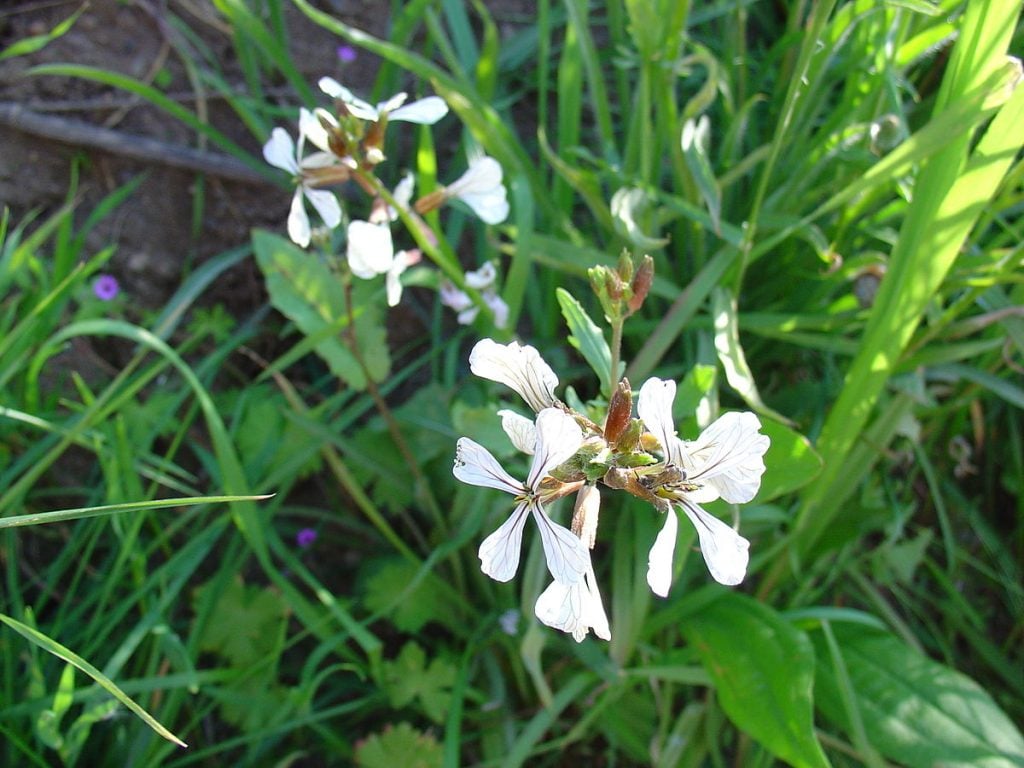
Once picked, the leaves can be bruised easily, so you need to wash them carefully (especially if you have used fertilizers or pesticides). Then you can pat dry and store them in a plastic bag in the fridge. Follow these 4 steps on how to grow rockets in your garden and have tasty rockets in your salad as much as you want!
Different Varieties of Rocket
- Wild rocket ‘Wasabi’ has a taste, as the name suggests, and it also has a pungent odour and taste.
- ‘Runway’ is known for its speed of growth.
- ‘Sky rocket’ has a unique combination of wild rocket’s taste and flavour with the rapidly growing speed of salad rocket!
- Salad rocket ‘Pronto’ has bright and shiny leaves, which help to make the salad more appetizing, and the taste falls exactly between the garden and the wild rocket.
Key Points to Remember About Growing Rockets
Rocket plants have a high nutritional value, and they might be ideal for use in salads in the UK. Although they are easy to grow, they prefer moist soil and cannot grow well in dry and hot weather conditions.
You can grow them in containers/pots or outdoors. There are 2 major types, namely wild rocket and garden rocket plants which have different properties. Wild rocket is perennial and has a stronger peppery taste, whereas garden rocket has a more subtle taste and is annual.
Harvest the outer leaves first and enjoy its flavours! These plants, which are harvest-ready in just a month after planting, may be a great addition to your garden.
Frequently Asked Questions
Are Rocket Plants Easy to Grow?
Yes! They can be grown in containers or garden beds. They don’t prefer growing in hot, dry conditions, but they can survive in such climates, also. They are one of the most rapidly growing plants. Their hardiness level is H4 which indicates that they can be grown in most regions of the UK.
What Are the Types of Rocket Plants?
The two major types are garden rocket and wild rocket plants. They both differ in taste, where salad rocket has a nuttier taste, and the wild rocket has a strong peppery flavour in comparison to the milder flavour of the salad rocket. The former is an annual plant that will die off after flowering once, whereas the wild rocket will produce flowers for years. There are several garden and wild varieties of this plant. Some of the common ones include Wild Rocket Wasabi, Runway, Sky Rocket, and salad rocket pronto.
How Often Do I Need to Water My Rocket Plants?
It depends on the weather because if it is dry and hot weather, you may need to water more often, whereas, in colder weather conditions, you can water less often. You can also use liquid fertilizers to provide them with the nutrients they require so that you can support their fast growth.

![How To Grow Rocket In Your Garden [4 Easy Steps]](https://www.thearches.co.uk/wp-content/uploads/How-To-Grow-Rocket-In-Your-Garden.jpg)



